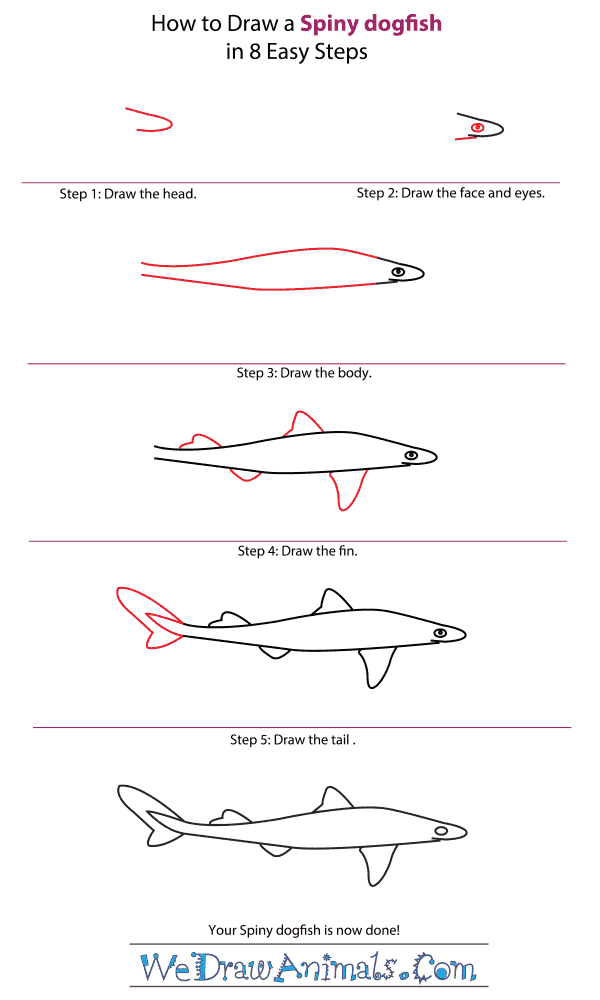In this quick tutorial you'll learn how to draw a Spiny Dogfish in 5 easy steps - great for kids and novice artists.
The images above represent how your finished drawing is going to look and the steps involved.
Below are the individual steps - you can click on each one for a High Resolution printable PDF version.
At the bottom you can read some interesting facts about the Spiny Dogfish.
Make sure you also check out any of the hundreds of drawing tutorials grouped by category.
How to Draw a Spiny Dogfish - Step-by-Step Tutorial
Step 1: Let's start with the head. Draw an oval shape.
Step 2: Alright, let's add the face. Draw a small circle and then a bigger circle. Draw a line for the mouth.
Step 3: Okay now for the body. Draw two long lines that are rounded at first and closer together at the end.
Step 4: Our spiny dogfish needs fins to swim! Draw two bigger triangles at the front, and smaller ones at the back of the body.
Step 5: Finally, let's draw the tail. Draw a heart shape with a longer upper part. This gives our spiny dogfish maneuverability and speed!
Interesting Facts about the SPINY DOGFISH
The Spiny Dogfish is a member of the fish family and the scientific term for them is Squalus acanthias. Other common names for this animal are the Piked Dogfish, the Spurdog, or the Mud Shark. They get their name from having a barb (Spiny) on the back of their dorsal fins, and appearing a bit like a canine (Dogfish).
Did you know?
- It was first documented in 1758.
- The babies can take up to 21 years to become mature.
- They reach over 5 feet long.
- The female can be pregnant for up to 2 years.
- It has a maximum of up to 11 babies at birth.
- They have a minimum of at least 2 babies at birth.
- The swimming depths can reach up to over 2,100 feet deep.
This species was the most abundant shark in the world, but is now vulnerable to extinction.The animal is found usually in shallow waters in most parts of the world, especially in temperate waters, where they feed on the bottom. This type of greyish brown fish is poisonous at their spines. Industry collects this fish for a variety of food, but also as fertilizer and oil.






